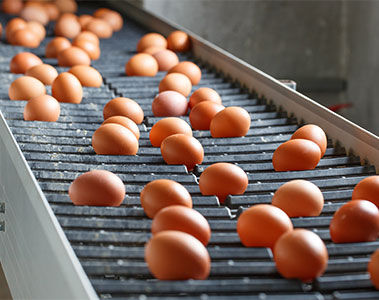
Modern poultry production faces a unique set of challenges and opportunities. With advancements in genetics, broilers are growing faster, depositing more muscle mass, and reaching market weight at an earlier age. However, this accelerated growth demands precise nutritional support, particularly in the areas of calcium (Ca) and phosphorus (P) nutrition, which are essential for bone development, metabolic function, and overall health.
Historically, nutritionists relied on total calcium values and fixed Ca:P ratios in feed formulations. But current research shows that this approach falls short in meeting the nuanced requirements of the modern broiler. A re-evaluation of mineral strategies—integrating digestible calcium, enhanced vitamin D metabolism, and advanced enzyme technologies—is necessary to unlock performance gains, ensure skeletal health, and reduce costs and environmental impact.
Calcium is a central component of skeletal tissue and plays a role in nerve conduction, muscle contraction, and enzyme regulation. However, its bioavailability is affected by numerous factors:
The variability of limestone quality was clearly demonstrated in Brazilian studies where over 25 samples showed significant differences in calcium content, solubility, and particle size—factors that failed to correlate strongly with digestibility. This underscores the importance of characterizing the specific limestone source used in formulation, rather than relying on standard tables or assumptions.
Phosphorus is a vital component of bone and cellular metabolism, but in typical plant-based diets, much of it is bound in phytate. Without phytase, this bound phosphorus is poorly available, leading to suboptimal utilization and high excretion rates.
The advent of phytase enzymes revolutionized phosphorus nutrition, significantly improving P availability and reducing environmental phosphorus load. But calcium can interfere with phytase efficacy, especially in high-Ca environments where insoluble calcium-phytate complexes form. Therefore, optimizing phosphorus usage is inextricably linked to calcium management and enzyme supplementation.
A major shift in poultry nutrition is the move from total to digestible calcium. Unlike total calcium, digestible Ca accounts for the actual amount that can be absorbed and used by the bird. This shift aligns with how phosphorus has long been treated in diet formulation.
Digestible Ca formulation requires:
Formulating digestible Ca can help avoid excess mineral inclusion, reduce formulation costs, and improve nutrient utilization.
Vitamin D is essential for calcium and phosphorus absorption. In broilers, it exists in several forms:
Hy-D® is particularly beneficial in intensive production systems, where birds are raised without sunlight and rely solely on dietary sources of vitamin D. Studies have shown that 25-OH-D₃ is:
Based on the information above, the Hy-D Improvement Factor was formulated. The Hy-D® Improvement Factor is a practical concept designed to quantify the extent to which dietary calcium and phosphorus levels can be reduced when Hy-D® is used in combination with phytase. This approach was evaluated in three independent trials involving over 1,200 Cobb broilers, assessing performance outcomes across varying levels of mineral and phytase supplementation.
Regression analysis from these trials enabled the quantification of nutrient equivalencies provided by Hy-D®:
These equivalencies allow nutritionists to confidently reduce mineral levels in the diet while maintaining or improving animal health.
A simulation of broiler starter, grower and finisher diets using Hy-D®improvement factor revealed that:
Economic:
Environmental:
These benefits align with sustainability goals, offering producers a path to reduce input waste and environmental impact while improving ROI.
Optimizing calcium and phosphorus nutrition in broilers is no longer a question of "more is better." With deeper understanding of digestible calcium, the synergistic effect of phytase and Hy-D®, and the use of data-driven formulation tools like the Hy-D® Improvement Factor, poultry nutritionists can:
In an industry where margins are narrow and pressures are high, such innovations offer a clear path to precision, profitability, and progress in broiler nutrition.
10 July 2025